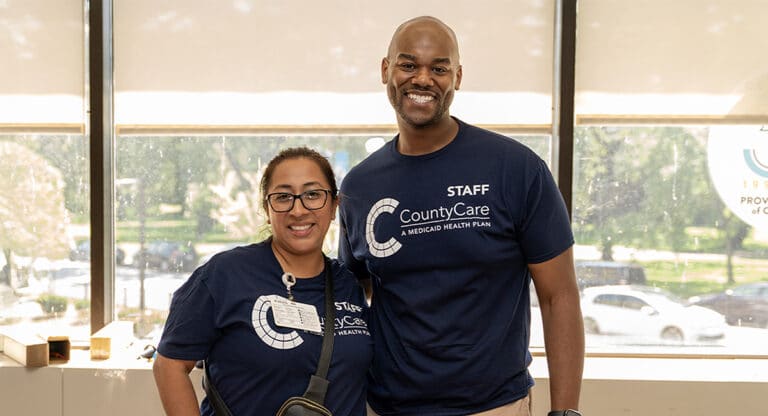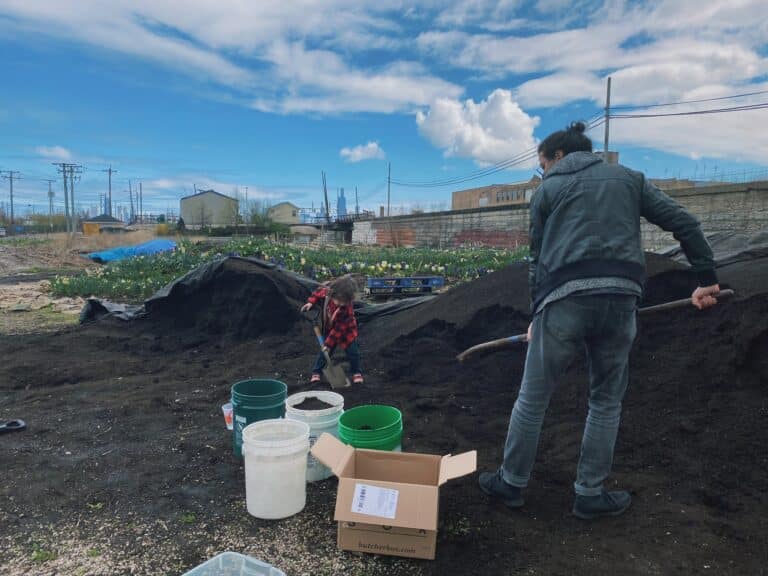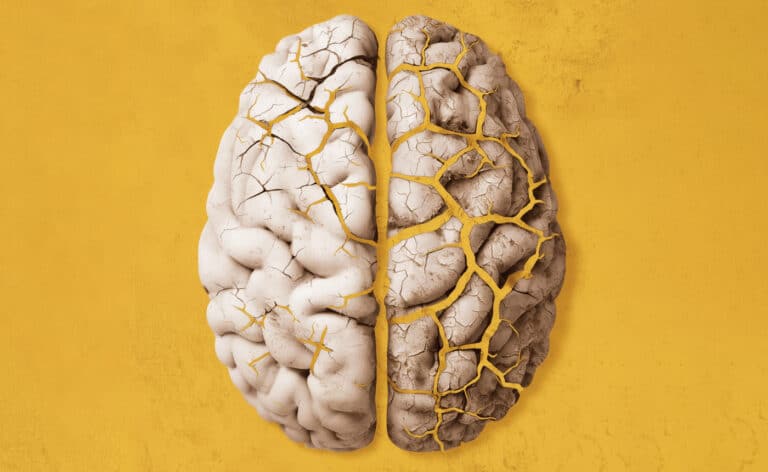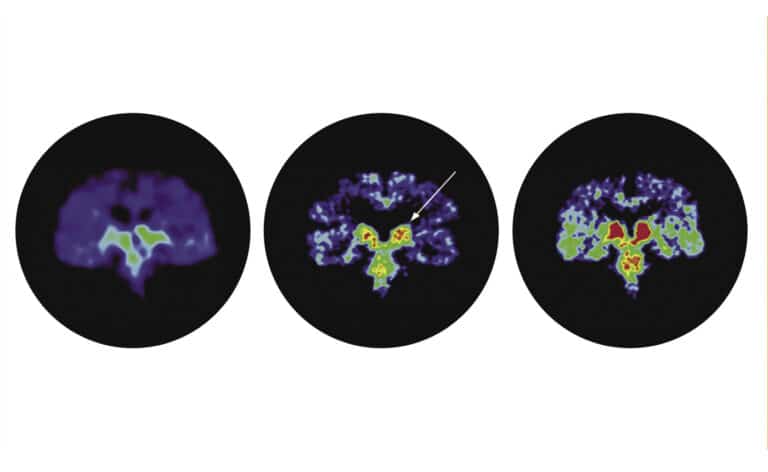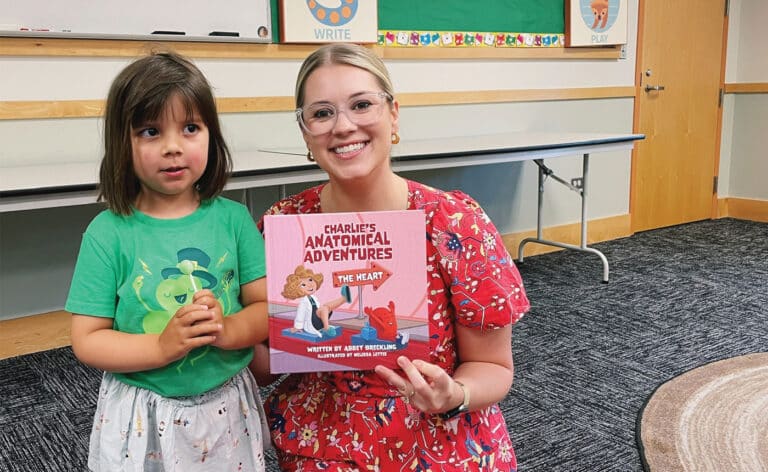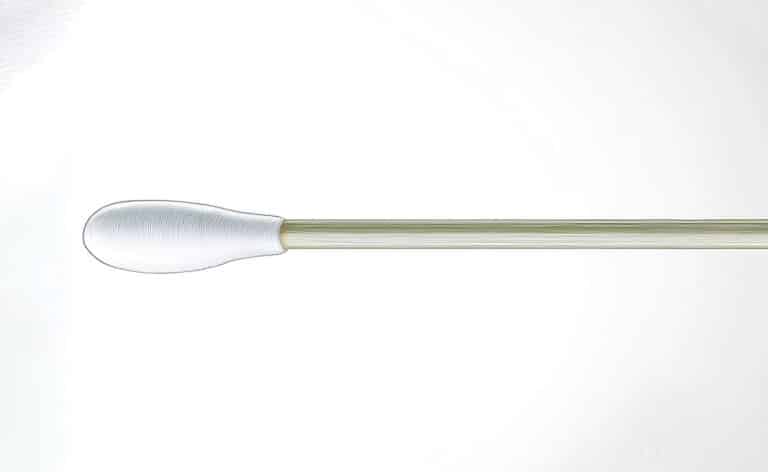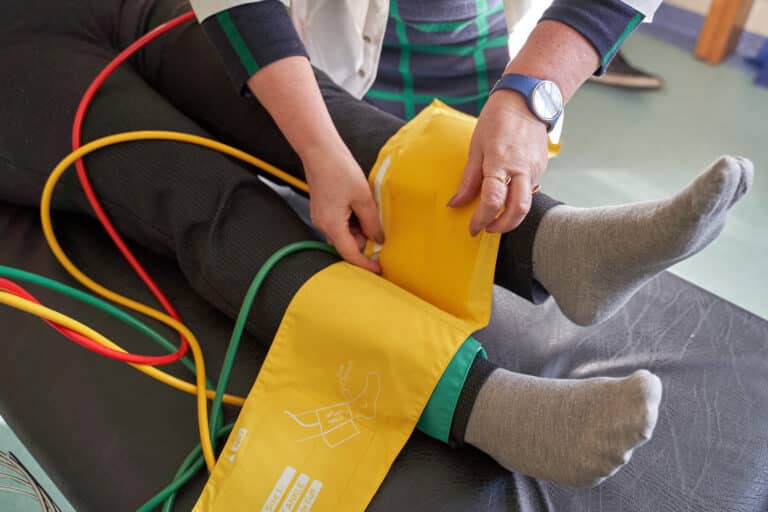As residents stress over unpaid medical bills, Illinois pilot programs pledge to abolish $1 billion of medical debt
Fact checked by Jim Lacy
Gloria Austin knew she had a problem when a red rash, a line around her stomach, appeared, as pain ramped up. The East Garfield Park resident was 62 at the time.
After searching online, Austin realized she might have shingles. Without insurance or a primary care doctor, she turned to the emergency room at Rush University Medical Center.
By the time she arrived in September 2020 and went into triage, the pain was excruciating, she recalls.
“The first thing they want to know is if you have insurance,” Austin says. “I kept telling them on repeat, ‘I am uninsured. I can’t pay for this treatment, but I need help,’” Austin says.
Her diagnosis came back as she expected: shingles.
A $1,000 bill arrived in the mail. “I looked at it and shook my head because I knew I couldn’t do anything about it,” Austin says. “And bill collectors only want to know one thing,” she adds. “When are you going to pay the bill? They don’t want to hear about your hardship.”
Medical debt as disease
Americans owe at least $220 billion in medical debt, making it the leading cause of bankruptcy in the U.S. Three million people owe more than $10,000, according to nonprofit health research group Kaiser Family Foundation (KFF).
“It’s growing, partly because healthcare costs are going up broadly and because lots of policies these days have really high deductibles, so people end up with a lot of out-of-pocket expenses,” says Cook County Board of Commissioners President Toni Preckwinkle.
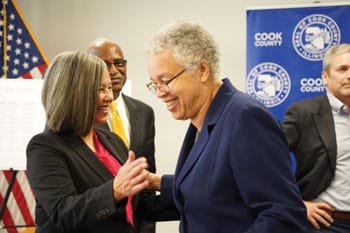
Despite hospitals offering financial assistance and charity care policies, many people still end up with medical debt. The problem, according to Undue Medical Debt President and CEO Alison Sesso, is the financial amount insured people are expected to pay out-of-pocket. That’s coupled with a healthcare system that frequently denies or delays claims because treatment is deemed not medically necessary. “Our system, unfortunately, has expectations of financial contribution from the individual that is unreasonable given their income,” Sesso says.
In early January 2025, the outgoing Biden administration moved to ease the burden by banning medical bills from credit reports via the Consumer Financial Protection Bureau (CFPB) rule. The goal:to help people blocked from mortgages, or car or small business loans. The federal law removed approximately $49 billion in medical debt from 15 million Americans’ credit reports, according to the bureau. The change is estimated to raise affected individuals’ credit scores by an average of 20 points and potentially lead to 22,000 new mortgages.
However, as of March 2025, the Trump administration had put this abatement on hold. Via an executive order, Trump instructed the CFPB “not to issue any proposed or formal rules, stop pending investigations and not open new investigations, halt all stakeholder engagements and abstain from issuing public communications.”
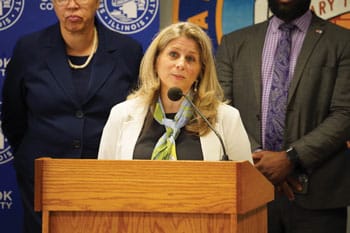
While removing medical bills from credit reports would undoubtedly help individuals with medical debt, medical bills themselves are rife with errors, according to the CFPB. Complex billing systems compound the problems.
Ruth Landé is vice president of provider relations at Undue Medical Debt (formerly RIP Medical Debt), a national nonprofit focused on buying large, bundled medical debts across the U.S. “A majority of these unpaid bills are for insured people,” Landé says.
Even for people with health insurance, complicated procedures or visits with multiple specialists can lead to costly bills. And unlike prices on a restaurant menu, hospitals don’t offer up clear information on costs. Charges depend on each individual’s coverage, a provider’s network status with the various insurers, and other factors.
“There’s a lot of battling that goes back and forth with claims and denials,” Landé says. “People are so overwhelmed, they are often not even opening those bills. The level of anxiety dealing with this topic is really high.”
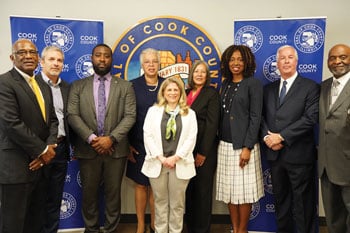
Medical debt disproportionately impacts communities of color, women, parents, those with low incomes, and uninsured adults, according to KFF. More than 40% of American adults have debt due to medical or dental bills.
“The solution is to have universal healthcare in this country,” Preckwinkle says. “But we’re not there yet. In the interim, those of us who believe we need universal healthcare have to figure out other ways that we can be supportive of our population. One of them is helping people erase medical debt.”
What’s being done
In February 2025, Illinois’ Medical Debt Relief Pilot Program announced it had wiped out more than $345 million worth of medical debt for 270,000 Illinois residents by working with Undue Medical Debt.
Gov. JB Pritzker proposed the medical debt relief program last year while discussing the 2024 fiscal budget. In July, Pritzker signed the bill into law, creating the Medical Debt Relief Pilot Program with $10 million dedicated to outstanding, unpayable medical debt for Illinois residents. Illinois’ 2026 budget includes $15 million to alleviate this problem.
The program helps anyone with medical debt that equals 5% or more of household income or anyone with medical debt who has an annual income at or below 400% of the federal poverty level. The Illinois Department of Healthcare and Family Services (HFS) worked with Undue Medical Debt.
Sesso says most people want to pay their bills. “They simply don’t have the means.”
How Cook County helped launch a trend
Currently, Undue Medical Debt has about 20 active contracts with various governmental entities throughout the country.
The price the organization pays to acquire the debt depends on the debt’s age, Sesso says. The older it is, the cheaper it is. Undue Medical Debt focuses on buying medical debt that is seven years and younger. “Anything older, we’ve been asking for it to be donated to us,” Sesso says.
While Undue is structured like a typical nonprofit, “There is no other nonprofit that does the work that we do,” Sesso says. “We’re the only one that exists, which is why we’re doing it across the country.”
Three years ago, Landé says most peoplehadn’t heard of Undue Medical Debt. That’s changing, in part due to Cook County.
In 2022, Cook County became the first county in the U.S. to leverage federal funds from 2021’s American Rescue Plan Act (ARPA) for medical debt abolishment. With $9 million in Illinois’ federal funds, Undue Medical Debt “has the potential to negotiate the purchase of up to $1 billion in medical debt for Cook County residents and cancel it,” Preckwinkle told the public.
“President Preckwinkle gets a lot of credit for taking the first leap and coming up with the idea to use ARPA funds to do debt relief,” Sesso says. “I think it’s pretty creative and aligns with other things she’s been doing.”
Since the program’s launch in 2022, Cook County’s Medical Debt Relief Initiative (MDRI) has now erased $382 million in medical debt for more than 213,000 Cook County residents.
“Subsequently, other municipalities, counties, and states have adopted this
idea that it could be government that supported these kinds of programs, not simply philanthropy,” Preckwinkle says.
Initially, AdventHealth, Sinai Hospital, Loretto Hospital, and Vituity healthcare systems partnered with Cook County. “God bless, because they were willing to step up at the very beginning,” Preckwinkle says. “And then others have come on board.”
That list now includes University of Chicago Medicine, which announced in 2023 it had abolished more than $240 million in medical debt for 123,000 patients via MDRI. Loyola Medicine forgave $112 million worth of medical debt in 2024, impacting more than 60,000 people after reaching an agreement with MDRI and Undue Medical Debt.
“We hope this won’t be the end,” Preckwinkle says.
Beyond Chicago
Other organizations are also working to relieve medical debt. Dollar For, a national nonprofit, helps people navigate medical debt and access hospital charity care. Closer to home, Kara Murphy is president of DuPage Health Coalition and also working to help people navigate medical debt. The nonprofit, based in Carol Stream, helps low-income and uninsured residents in DuPage County access healthcare via its Access DuPage program, which serves approximately 6,000 people annually. The program began more than 20 years ago and includes a free pharmacy called Dispensary of Hope.
“We don’t pay for the medical debts,” Murphy says. “We help people determine whether they qualify for additional assistance. If they do, we help them with the process of applying for financial assistance.”
Medical debt disproportionately affects people of color, people with low incomes, and those who are uninsured — “real and profound” inequities, Murphy says. Still, the greatest predictor of medical debt is getting sick, she adds. “Not surprisingly, people with greater medical complexity are more likely to have medical debt.”
What many people don’t realize is hospitals offer financial assistance. “There is financial assistance at every hospital in DuPage County, up to 600% of federal poverty,” Murphy says.
For a family of three in 2024, 600% of federal poverty level meant a gross income of $154,920 or less. For a family of four, it was $187,200. Murphy says, “Oftentimes people assume that they won’t qualify but are surprised to learn that, in fact, there is some help available.”
Regardless of income, it’s important to ask questions.
“You have to educate yourself about the process,” says Austin, who enrolled in Medicare when she turned 65. “Get an itemized statement of your bill because you will find some unscrupulous stuff on there.”
For some, like Austin, who received a letter in the mail from Undue Medical Debt stating her medical debt from two hospital visits had been paid, it feels like a miracle.
“I was blown away,” Austin says.
At first, she didn’t believe the letter was real. She wondered who would pay off her medical bill. Once she realized it wasn’t a hoax, she says everything changed. “The weight, the heaviness, was lifted.”


